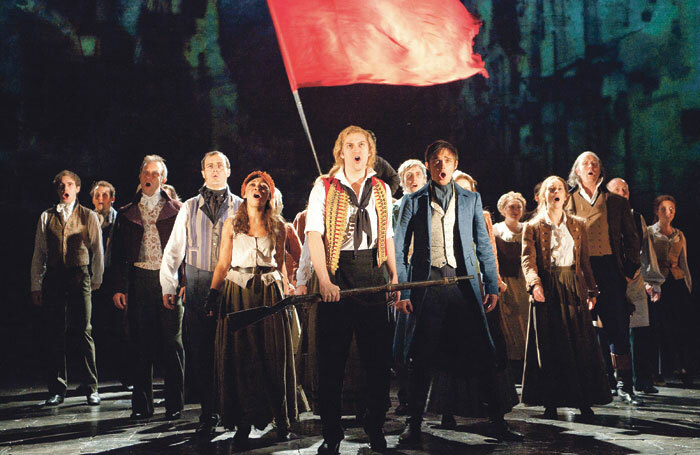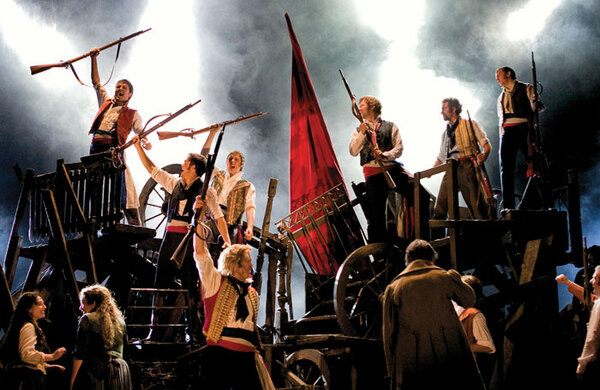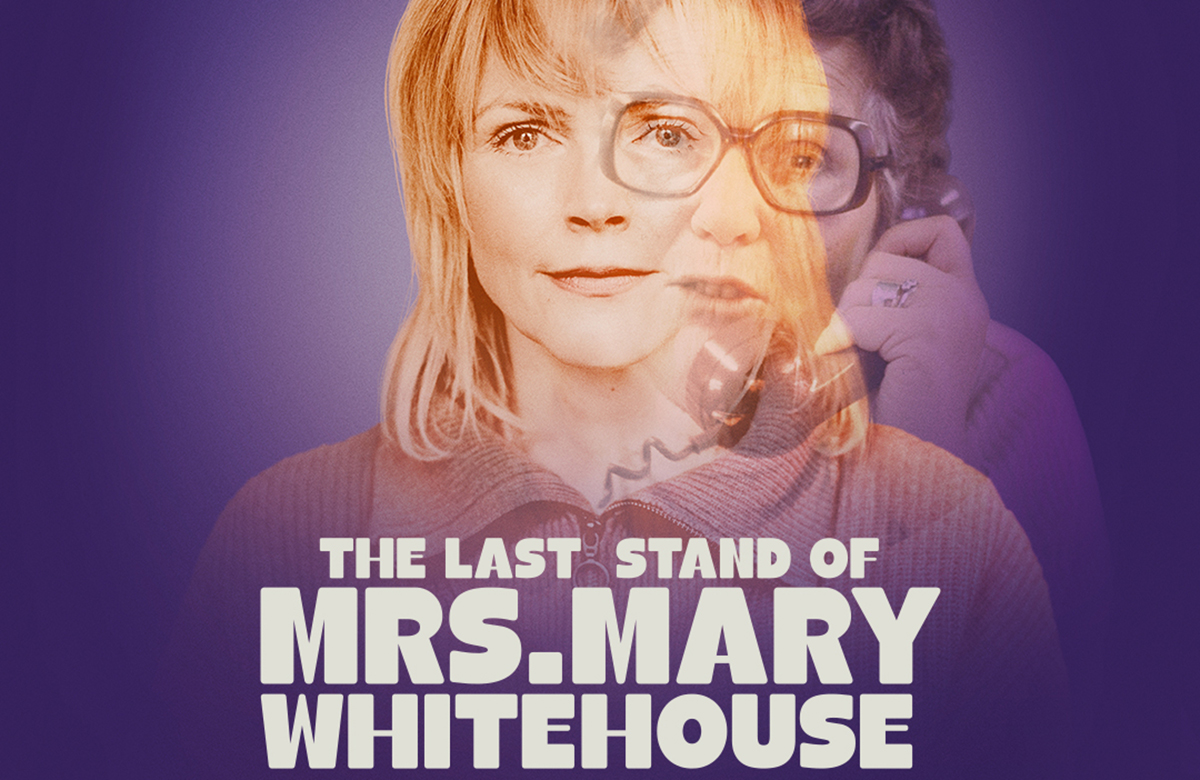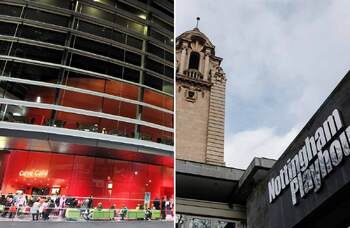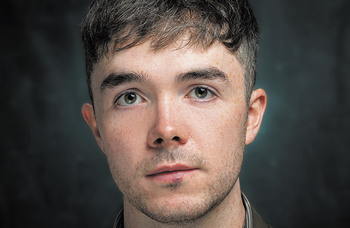Richard Jordan: Les Miserables revolutionised musical theatre – I’ll miss the original version
Last week producer Cameron Mackintosh ran adverts for The Phantom of the Opera in the London Evening Standard with an image of the iconic mask and strap line: “The Brilliant Original”.
In the same week, he also announced that when the West End’s Queen’s Theatre reopens after refurbishment at the end of the year, it will be with his new version of Les Miserables – which was created for the 25th-anniversary Broadway revival and has also been out on tour.
Over the past few years around the world, productions of that original 1985 Les Miserables staging have slowly vanished, replaced by this restaged and redesigned production.
Now the opportunity has arrived for Mackintosh to change the West End production. The question is if this update of Les Miserables is a decision motivated by a necessary overhaul or the fact that it will also represent a sizeable change in royalties.
Since 1985, a big beneficiary of Les Miserables has been its original producer, the Royal Shakespeare Company. This change of production means either this income will stop or be reduced. It’s the same for the original directors of the musical, Trevor Nunn and John Caird, and designer John Napier.
Nunn has previously gone on record in the press to voice his disappointment at Mackintosh’s decision, and the fans have shown their passion for the original with thousands signing a petition against the decision.
While there is a better chance of Brexit getting a second referendum than Mackintosh changing his mind, it is reflective of the understandable love in the room that exists for the original production.
Recently I rewatched the 1988 documentary Les Miserables Stage by Stage about the making of that original. What becomes clear is how crucial the RSC was in the journey of this musical’s success. The show proved instrumental in ensuring the British-made musical was finally taken seriously as a contemporary art form – even if the majority of critics did not agree at the time.
Caird and Nunn’s directorial approach was no different from the way they would treat a classical ensemble play. This rigour proved fundamental to its success, with traditional stagecraft and techniques put alongside high-tech stage mechanics.
I think the only work to come close since is John Tiffany’s production of Harry Potter and the Cursed Child in which, again, old-school stagecraft proves the key strength to its successful storytelling.
The RSC’s epic 1981 production of Nicholas Nickleby – also directed by Caird and Nunn – is surely where their ensemble directorial skills were honed, but a bigger influence upon Les Miserables may be the 1979 Broadway musical Sweeney Todd the Demon Barber of Fleet Street.
The show’s 1980 London transfer was a notable flop but an artistic hit. Crucially, during its short run, the production caught the attention of serious theatregoers who may have been less-regular visitors to musicals. Sondheim’s portrait of London’s underbelly is far darker than in previous musicals, including Lionel Bart’s Oliver!.
Five years later, Les Miserables’ score offered a far more commercial, mainstream sound than Sweeney Todd. But Caird and Nunn’s skill was in the approach they took to it.
Here they take the lessons from Sweeney, and its more popular contemporaries, and combine the grittiness of the material with accessibility and epic storytelling. It proves a skilful collision between art and mainstream entertainment.
The iconic revolving stage sequences in the original Les Mis feature the best uses of a revolve I have ever seen in any theatre production
Its success is also, in no small part, due to the original cast. With the RSC globally recognised as an ensemble company, its involvement gave the production an immediate legitimacy for actors. As a result, Caird and Nunn cast stalwart RSC ensemble members including Roger Allam and Alun Armstrong beside some of the most established musical theatre actors of the time including Colm Wilkinson and Patti LuPone.
Then, they added a mix of exciting new talent, which included Michael Ball and Frances Ruffelle. Like many of the other great RSC ensemble productions of the 1980s, this created a fusion of experience and energy from which the directors were able to mould their production. All this means the original London company of Les Miserables could arguably be called the greatest musical theatre ensemble of all time.
The original Les Miserables set a defining path for musical theatre’s future. It created a visible, high-profile marriage between subsidised and commercial theatre that continues today through works such as Matilda the Musical. Without it, we may not have also seen other classical actors follow into musicals such as Jonathan Pryce with his seminal performance as the Engineer in Miss Saigon in 1989.
Watching the new Les Miserables it felt like someone sat down with the original blocking and if a character previously exited stage right, now they exited stage left. It also means the loss of the iconic revolving stage sequences. Those remain the best uses of a revolve that I have ever seen in any theatre production.
There is also a more deliberate focus in this new version on big-button moments. When I Dreamed A Dream is sung in this new production, its audience is inevitably more familiar with Susan Boyle singing it than Patti LuPone, who had a single chart release with the song in 1985. This may also best reflect the big difference between these two productions: the new version feels altogether broader and less subtle than the original.
Another question: can a new version of Les Miserables still be called the West End’s longest-running musical production? If not, will it be eligible again for the Evening Standard and Olivier Awards?
In many respects, the idea of any musical running for more than 30 years sounds insane. But returning recently to see the West End production reaffirmed why – like its nearby West End neighbour The Phantom of the Opera – it remains a “brilliant original” and I’m certainly going to miss it.
Richard Jordan is a producer and regular columnist for The Stage. Read his latest column every Thursday at thestage.co.uk/author/richard-jordan
Opinion
Recommended for you
Advice
Recommended for you
Most Read
Across The Stage this weekYour subscription helps ensure our journalism can continue
Invest in The Stage today with a subscription starting at just £7.99
 Richard Jordan
Richard Jordan